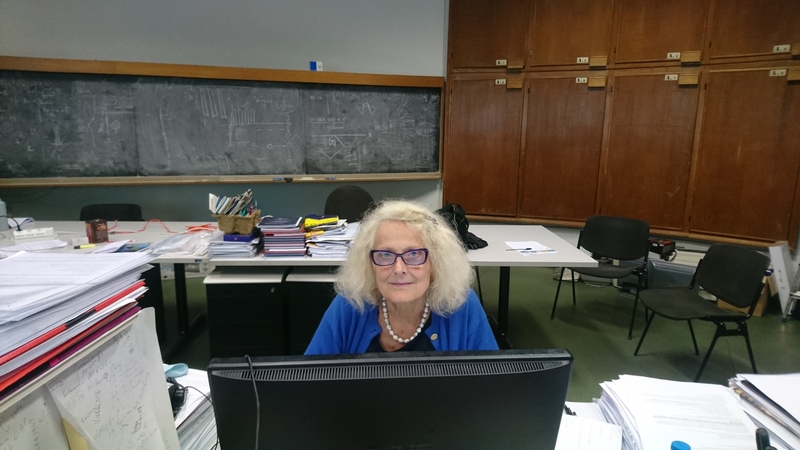Objectives
Click here to download the presentation
Click here to watch the seminar
Abstract:
The multidimensional problem of protein-protein interaction and protein phase separation: machine learning based solutions at the Bologna Biocomputing group
Rita Casadio
Bologna Biocomputing Group, University of Bologna, Italy
In cells, the ensemble of billions of reactions in a living organism takes place in heterogeneous and crowded environments that influence the efficiency of the reactivity and the density distribution of participating macromolecules in biological processes and metabolic pathways. Besides the complexity of the inner membrane compartments in Eukaryotic cells, recent advancements in microscopy and liquid phase separation make it possible to highlight some dynamical aspects of open macromolecular assemblies, referred to as membraneless organelles that are common to several types of cells working under physiological conditions (1, 2). Results support the notion that condensation mechanisms are driven by collective protein-protein and protein-nucleic acid interactions, in dynamic equilibria with the surroundings and that phase separation phenomena may indeed link microscopic to mesoscopic structural and functional characteristics of the cell milieu. In this scenario, it is even more urgent to understand which proteins can undergo the single to droplet phase transition for describing and modelling the emergent properties of the complex cell interior. I will sum up our present source of information for protein-protein interactions and briefly describe the never-ending process of generating algorithms in our (ISPRED4, https://ispred4.biocomp.unibo.it) and other groups capable of extracting information from valuable data, with the aim of transferring knowledge by computing properties of never-seen before examples (3, 4). Finally, I will focus on the interesting finding that when considering the membraneless Cajal body proteins, predicted interaction patches well correlates with number of experimentally determined interactors when the interaction patches include residues with an inherent flexibility (4).
REFERENCES:
- Shin Y, Brangwynne CP. 2017. Liquid phase condensation in cell physiology and disease. Science 357:1253-1265.
- Rivas G, Minton AP. 2018. Toward an understanding of biochemical equilibria within living cells. Biophys Rev. 10:241-253
- Baldi P. 2018. Deep learning in biomedical data science. Annu.Rev.Biomed.Data.Scie 1:181-205
- Savojardo C, Martelli PL, Casadio R. 2020. Protein-Protein interaction methods and protein phase separation. Annu.Rev.Biomed.Data.Scie 3:89-112
Short biography:
 Rita Casadio is presently Honorary and Contract Professor at the Bologna University, Italy and Associate Researcher at IBIOM-CNR, Bari, Italy, the Italian central node of ELIXIR. ISCB Fellow for the class 2020, she has been the founder and the leader (now senior) of the Biocomputing Group of the Bologna University since 1990 (www.biocomp.unibo.it). The group from the early years has been active in problem solving in structural bioinformatics by implementing tools out of machine learning and more recently out of machine and deep learning, addressing several issues of protein functional annotation. An intensive field of research is the functional annotation of single nucleotide polymorphisms associated to diseases, including functional annotations of protein-protein interacting residues and their role in maladies.
Rita Casadio is presently Honorary and Contract Professor at the Bologna University, Italy and Associate Researcher at IBIOM-CNR, Bari, Italy, the Italian central node of ELIXIR. ISCB Fellow for the class 2020, she has been the founder and the leader (now senior) of the Biocomputing Group of the Bologna University since 1990 (www.biocomp.unibo.it). The group from the early years has been active in problem solving in structural bioinformatics by implementing tools out of machine learning and more recently out of machine and deep learning, addressing several issues of protein functional annotation. An intensive field of research is the functional annotation of single nucleotide polymorphisms associated to diseases, including functional annotations of protein-protein interacting residues and their role in maladies.
Educational Background: RC, after her degree in Physics at the University of Bologna, Italy, attended several courses in Italy and abroad and acquired experience and theoretical background in different fields, such as Computer Science, Membrane and Protein Biophysics, Bioenergetics and Irreversible Thermodynamics.
Professional Experience: After working in Laboratories of Biophysics both in the United States and in Germany, in 1987 RC became Assistant Professor of Biophysics at the University of Bologna Italy. From 1/10/2003 until 30/10/2019, she has been full professor of Biochemistry/Bioinformatics/Biophysics at UNIBO. RC worked in membrane and protein Biophysics (particularly with bacteriorhodopsin from Halobacterium Halobium and F1F0 ATPases from mesophilic organisms), both experimentally and theoretically. Presently she is interested in computer modelling of relevant biological processes, such as protein-protein interaction, genome annotation, protein interaction networks, SNPs search and annotation and their effect on protein stability. One major field of research is the development of specific software for problem solving of large-scale analysis of biomedical and biotechnological data out of genome sequencing or of experiments on proteomes and interactomes. Methods rely on neural networks, hidden Markov models, Support Vector Machines, conditional random fields, deep neural networks and their combinations. Her researches are devoted to different aspects of protein functional annotation, including prediction of disulfide bridges, membrane protein topology, protein stability, protein function, protein-protein interaction and protein reaction mechanisms in biological processes (for details see http://lipid.biocomp.unibo.it). RC is the author of over 300 scientific papers and presented her work at several (over 300) national and international meetings (for details see http://lipid.biocomp.unibo.it/casadio/cv.html).
Speakers
